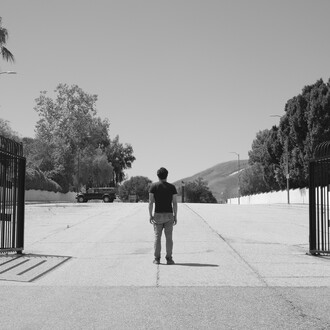Julie Enckell Julliard organized the first institutional retrospective of Pierrette Bloch in 2014 at the Musée Jenisch in Vevey, Switzerland, and contributed an essay to the recent publication Pierrette Bloch. Différence et répétition (2024).
The exhibition coincides with the current retrospective Pierrette Bloch - La peinture par d'autres moyens im Musée d'art moderne et contemporain in St.-Étienne, France, which is on view until September 21, 2025.
Galerie Karsten Greve is pleased to present with Essence the first solo exhibition of Pierrette Bloch at its Cologne gallery since more than ten years. Spanning five decades of prolific artistic creation and presenting 40 works from 1973 – 2015, the exhibition illustrates Bloch’s artistic development along with the versatility and liveliness of her visual language. As an artist who perfectly captured the zeitgeist of her era, Bloch turned to a radical simplification of the painterly process and the simplicity of artistic material. Underrated throughout most of her career, Galerie Karsten Greve started representing Pierrette Bloch in 2011. Nine solo exhibitions, numerous group shows as well as important institutional exhibitions and monographic publications have been realized. Now considered one of the most significant figures in Post-war French art, this new exhibition pays special tribute to the work of Pierrette Bloch.
Mainly focussed on works on paper, the exhibition highlights the medium that Bloch has relentlessly explored. In repetitions of point and line, emptiness and fullness recur a wealth of nuances and variations. Untitled (Ca. 1973, PB/P 377) is one of the earliest works on display. The irregularly regular marks in black ink allude to Japanese calligraphy. Several blotches in the upper part of the page give the work a study-like quality, perhaps by a child, still exploring the calligraphic tools. Bloch’s mother had grown up in Japan which prompted Bloch’s preference for drawing, ink and paper from a young age.
In Untitled (1977, PB/P 21), the individual marks become fluent lines emphasising the impression of script. The drawing is reminiscent of the scribblings of Cy Twombly whose work Bloch encountered while traveling the USA during the 1950s and 60s. In 1951, aged 23, Bloch first exhibited her work in galleries in Paris and New York and was introduced to major artistic movements of the time, that would influence her future oeuvre.
Despite her early exhibitions, Bloch’s pioneering position went largely unnoticed for decades, as evidenced by the absence of her work in the exhibition 33 european painters at the Guggenheim Museum, New York in 1953. While it was never enough to see herself solely as a female artist, she was nonetheless marginalized in an art system dominated by men. For much of her life, she remained on the periphery of the art world.
Despite the contacts she made with other artists and, above all, her deep friendship with Pierre Soulages, whom she met in 1949, her life was characterized by solitude. ‘You must always keep going’ – a phrase, that got her through this period without accepting her fate, in which she never stopped producing art.
The lines in Untitled simultaneously convey freedom, dynamic, and regularity. They possess and transmit their own rhythm, making the work seem the visual rendering of a melody or musical piece.
Untitled (1980), as well as others of her works, moreover bears a vague reference to early computer art and the visual experiments of artists such as Vera Molnár. The opposition of black and white, of dots and plane recall the binary 0/1. Bloch’s drawings, however, carry the explicit gesture of the artist, imbuing the stern dichotomy with a literal human touch.
The late 1970s mark a break, in the sense of an expansion, in Bloch’s artistic practice, starting to create mesh pieces out of string, hemp and, most notably, horse hair. Maille (1980, PB/S 12) stands exemplary for this novel artistic medium and radical approach. The extremely fine, fragile yet tenacious, material conveys both precision and arbitrariness, as the hair from mane or tail would always slightly fray. For Bloch, it embodied and manifested continuity and time.
This specific interest in time becomes apparent in Untitled (1994, PB/M 16). Large dots are painted on a single strip of paper mounted on the wall. The work literally unfolds in time and into space, rendering it a physical as well as conceptual manifestation.
Bloch’s ongoing sense of experimentation, both with regards to medium and space, is also expressed in Untitled (2008, PB/P 399). The collage of various types of paper with vertical lines in ink is subtle, almost fragile. The work alludes to calligraphy and writing due to the varying density of the ink, while the thin and vertical lines recall the fine threads of her Mailles. By working with different papers, the material, its shade and grain, formed an integral part. Her works on Canson, Arches, Kraft, Vinci and transparent paper illustrate the versatility of the presumably basic medium. By times, the paper would be mounted on Isorel, Bristol or wood creating an interesting ambiguity between fixation and fleetingness, fragility and force.















